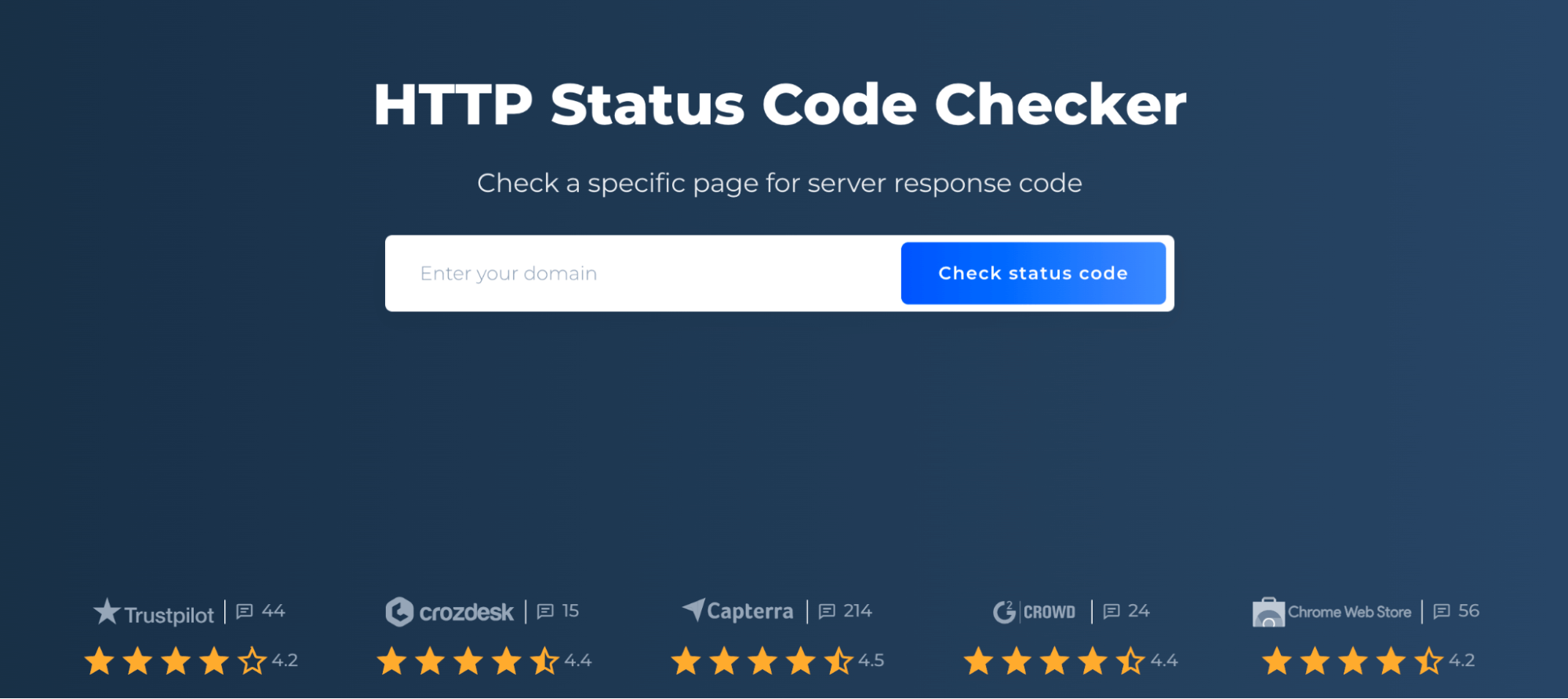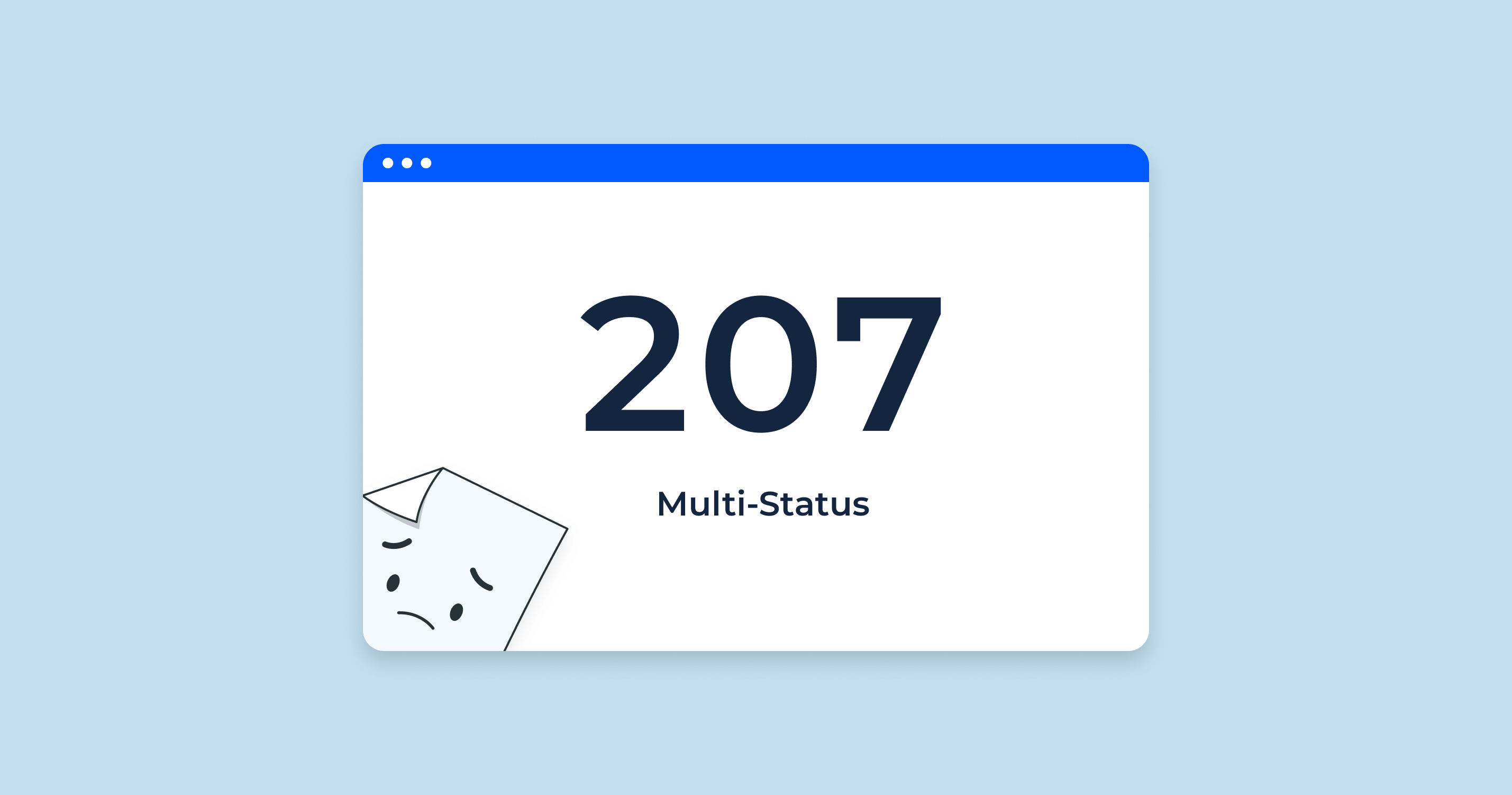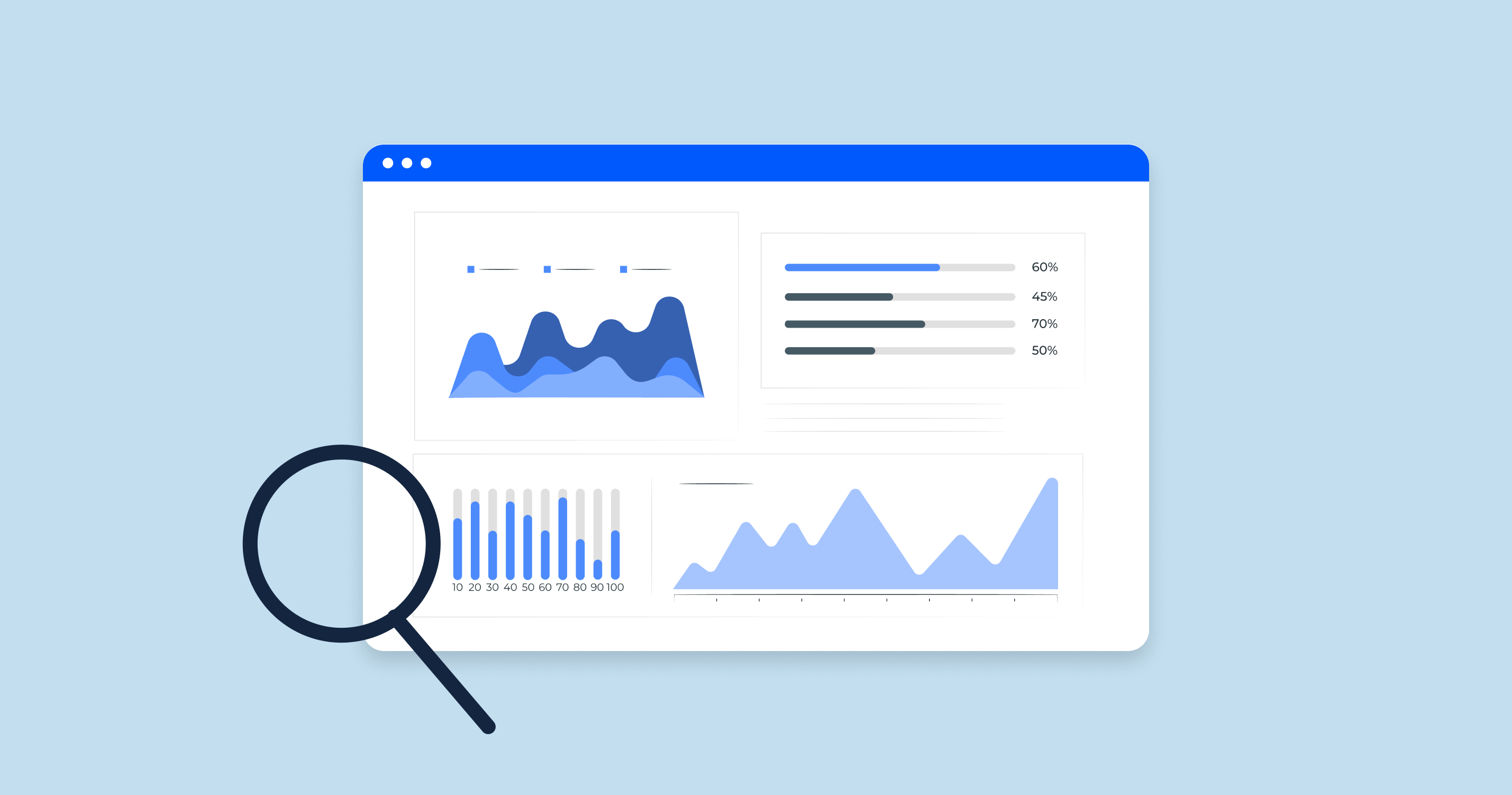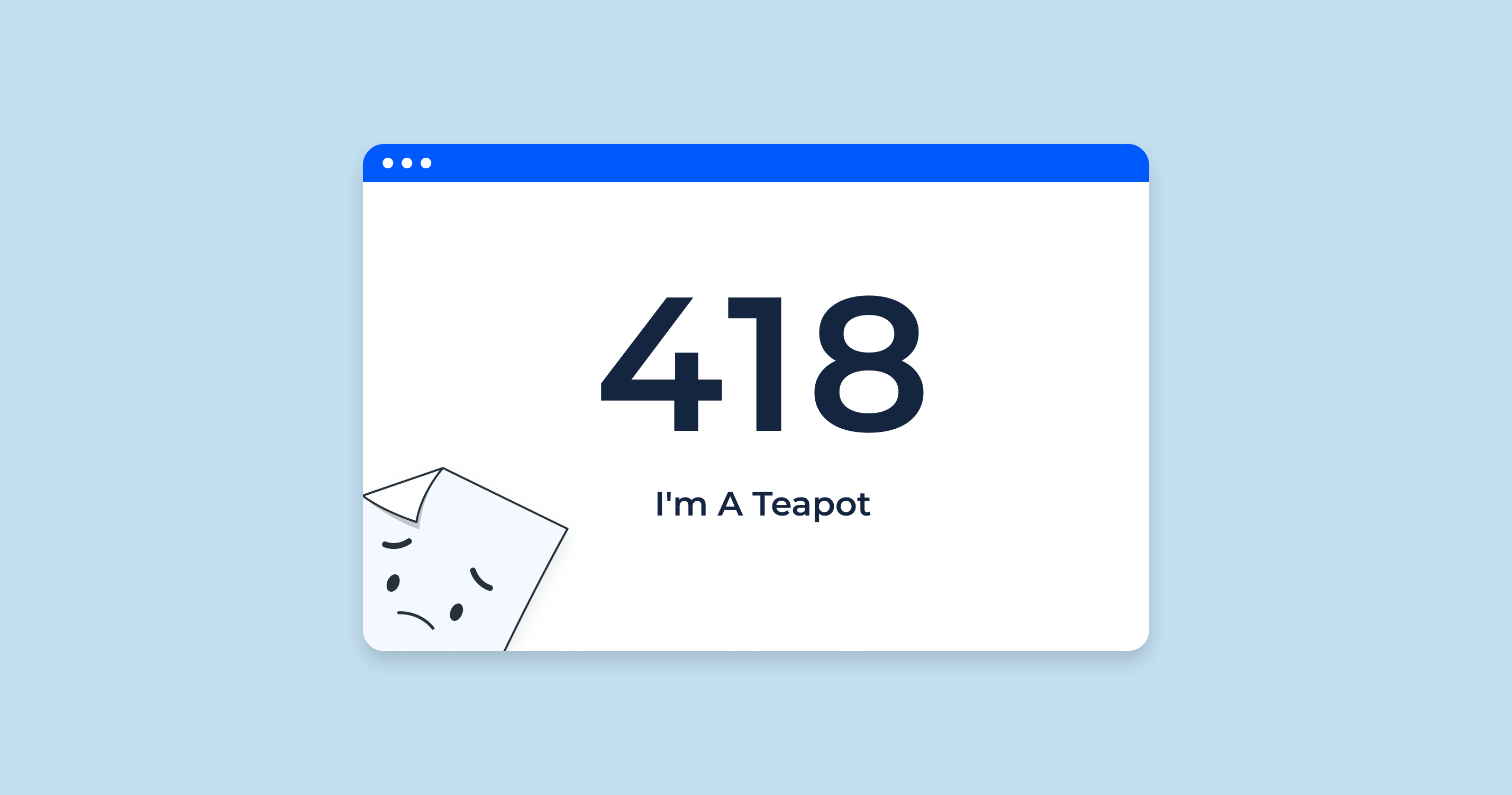What is the 207 HTTP Status Code?
207 HTTP status code is primarily associated with the WebDAV protocol (an extension to the HTTP protocol that allows users to collaboratively edit and manage files on remote web servers). The 207 status code is defined as “Multi-Status”.
When a client sends a request to a WebDAV server, it might affect multiple resources or require that multiple independent operations be executed. Instead of sending a single status code in response, the server might send a 207 Multi-Status response that contains multiple separate status codes for different resources or operations. This response can include information about multiple resources in situations where multiple status codes might be appropriate.
The 207 Multi-Status response typically comes in the form of an XML body which contains separate response elements for each resource. Each of these contains the status for that particular resource, as well as potentially other related information.
Always refer to the latest HTTP or WebDAV specifications or documentation for any updates or more detailed explanations.
Typical use cases for a 207 response
The 207 Multi-Status response, as part of the WebDAV extension to the HTTP protocol, serves a specific role in communicating multiple status codes for different resources within a single HTTP response. Here are some typical use cases for a 207 Multi-Status response:
-
PROPFIND Method. One of the most common uses of the 207 status code is in response to the PROPFIND method. This method retrieves properties (metadata) defined on the resource, or on multiple resources in case of a depth request.
For example, if you want to get properties for all files in a directory, the server might respond with a 207 Multi-Status, giving the properties of each individual file. - REPORT Method. This method retrieves information about a single resource or a set of resources. If the report is requested on a collection, the server can return a 207 Multi-Status response containing individual response elements for each resource the report covers.
- COPY and MOVE Methods. When copying or moving resources, especially if there’s an issue with one or more sub-resources, the server might respond with a 207 to indicate the status of each individual operation.
- LOCK and UNLOCK Methods. While these methods typically operate on single resources, there are scenarios where a lock might affect multiple resources (like in the case of a Depth lock). If the server cannot lock all resources, a 207 Multi-Status might be used to indicate which resources were locked successfully and which ones failed.
- Batch or Bulk Operations. In some custom extensions of WebDAV or other systems that use HTTP as a transport, there may be batch operations that work on multiple resources simultaneously. In such scenarios, a 207 Multi-Status could be used to provide individual status information for each of the resources in the batch.
- Error Reporting for Collections. If a client sends a request that affects a collection of resources, and there’s an error or warning related to one or more of those resources, a 207 Multi-Status can provide detailed error information for each affected resource.
- Sync Collection Report. For clients that support synchronization of collections, a 207 Multi-Status can be used to indicate changes (like added or removed resources) in the collection since the last synchronization.
These are the typical use cases, but it’s important to note that the applicability of the 207 Multi-Status response isn’t limited to these scenarios. Any time an HTTP operation affects multiple resources and there’s a need to report different status information for each of those resources, a 207 Multi-Status response might be appropriate.
207 Status Code SEO Implications
The 207 Multi-Status response code is native to WebDAV, an extension of the HTTP protocol, and isn’t commonly found in traditional web browsing scenarios. However, let’s discuss potential implications if you were to encounter this status in the context of SEO:
| Crawling Complexities | Standard search engine crawlers like Googlebot expect typical HTTP status codes like 200, 301, 404, etc., when accessing standard web content. Encountering a 207 Multi-Status during a crawl may cause confusion or may not be correctly processed, leading to potential issues in indexing. |
| Inefficiencies | If a crawler tries to process a 207 Multi-Status response, it may face inefficiencies because it has to parse the XML body and determine the status for multiple resources, potentially slowing down the crawl process. |
| Ambiguous Interpretation | A 207 Multi-Status response can contain multiple status codes for different resources. It might be challenging for a crawler to determine the overall health or status of a requested URL when there’s such ambiguity. |
| Potential Errors | If any of the resources within a 207 response have errors or issues (e.g., a nested 404 status), it could affect the SEO of the parent resource or URL. |
| Technical SEO Concerns | Advanced SEO specialists often use tools and headers to diagnose issues on a website. A 207 status code could confuse these tools or lead to false positives/negatives when trying to diagnose issues. |
| Analytics and Monitoring | Many analytics and monitoring tools may not recognize or accurately report on a 207 status, making it harder for SEO professionals to track and diagnose potential issues. |
| Recommendation | If SEO is a concern, it’s best to stick with more universally recognized HTTP status codes for publicly accessible content that you want to be indexed by search engines. Use standard response codes (like 200, 301, 302, 404, etc.) for content pages, and reserve specialized codes like 207 for application-specific scenarios where they’re appropriate and understood. |
Always keep in mind that SEO best practices evolve over time. Always refer to documentation from major search engines and stay updated on SEO community discussions to understand any changes regarding HTTP status codes and their implications.
207 Status Code Common Issues and How to Fix Them
The 207 Multi-Status code isn’t traditionally associated with common web browsing or website issues like a 404 would be. Instead, it’s more specific to WebDAV operations and other scenarios where multiple statuses for different resources must be returned in a single response.
That said, if you are working within a context where 207 Multi-Status codes are being used (e.g., certain WebDAV operations, custom applications, etc.), there can be potential issues to look out for:
Incomplete Multi-Status Information
A 207 response doesn’t provide complete information about all affected resources. This can lead to ambiguity or incorrect client operations.
Nested Error Codes
Within a 207 Multi-Status response, some resources may have error status codes (e.g., 404, 403). These can cause confusion or incorrect behavior on the client-side.
Misconfigured WebDAV Server
Improper server configuration can lead to 207 responses when they’re not appropriate or expected.
Incorrect Content Type
The 207 Multi-Status response should be accompanied by an XML content type (application/xml or text/xml), but it might be missing or incorrect.
Client Handling Issues
Clients (whether browsers, custom software, etc.) might not expect or correctly handle a 207 Multi-Status response.
Performance Issues
If a 207 response contains status information for a very large number of resources, it can be large and slow to process.
If you encounter issues with 207 Multi-Status codes in non-WebDAV scenarios, it might be worth evaluating if this status code is appropriate or if a more standard HTTP status code would be suitable.
HTTP Status Code Checker Tool for Identifying HTTP 207 Status Code

HTTP Status Code Checker is a valuable tool for webmasters and SEO professionals to inspect and diagnose HTTP response codes from websites. By using this tool, you can effortlessly identify if a specific URL or resource on your website returns a 207 Multi-Status response. Recognizing such responses can be crucial for those working with WebDAV operations or other specific applications where multiple statuses for different resources might be provided within a single response.
The utility of the tool isn’t limited to just identifying 207 status codes. SiteChecker Pro gives an in-depth analysis of all HTTP response codes, allowing users to pinpoint potential issues, from redirects to client and server errors. Understanding and rectifying these issues promptly can improve website performance, user experience, and SEO results.
Moreover, SiteChecker Pro streamlines the auditing process by providing easy-to-understand reports and actionable insights. For those unexpected 207 responses or any other unusual status codes, this tool can be a starting point for troubleshooting. It aids in determining if a particular status code is appropriate for the content or if changes need to be made to improve the site’s overall health and performance.
Conclusion
The 207 HTTP status code, designated as “Multi-Status,” is primarily linked with the WebDAV protocol. Its core function is to relay multiple status responses for varying resources in a singular HTTP response. This is crucial when a client request impacts multiple resources, necessitating detailed feedback on each. The response is typically structured in XML, enumerating the statuses of individual resources.While the 207 code is chiefly found in WebDAV operations, it can also appear in custom applications where batch operations on multiple resources are needed. SEO implications of the 207 status code are significant; it’s rare in conventional web browsing and may lead to challenges in crawling, analytics, and monitoring. If encountered during standard web operations, it’s recommended to adhere to more universally accepted HTTP status codes.





